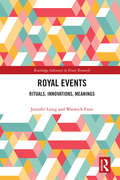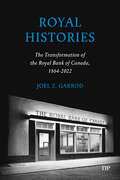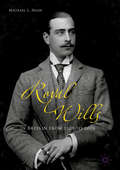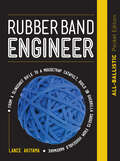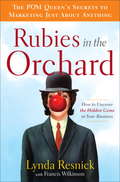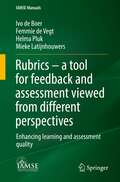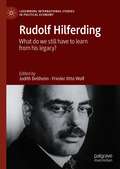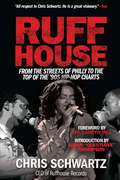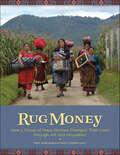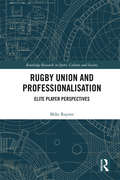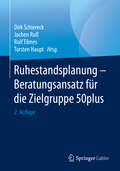- Table View
- List View
Royal DSM: From Continuous Transformation to Organic Growth
by Carin-Isabel Knoop William W. George Amram MigdalRoyal DSM CEO Feike Sijbesma was pondering the challenges of shifting DSM's global organization from the constant transformations of the past 100 years to creating organic growth. When Sijbesma took the helm as CEO in 2007, he further pushed and completed the company's final moves away from commodity chemicals and toward more sustainable businesses whereby DSM could create value with differentiated offerings. Sijbesma emphasized innovation and moving into "sunrise" businesses that would fuel future growth by playing a positive role in the broader society. Sijbesma asked himself, did DSM's current portfolio in life sciences and materials sciences provide sufficient growth opportunities to sustain consistent and superior performance? Would DSM's 21,000 employees worldwide embrace the DSM Strategy 2018: "Driving profitable growth through science-based sustainable solutions," anchored via the Lead & Grow support and development program for key managers of the company? Should DSM continue making moves in mergers and acquisitions (M&A) to complement organic growth, or could its growth goals be achieved by focusing on organic growth for now, followed later by M&A activities again? What new markets should it look to in order to ensure sustainable growth? Sijbesma felt that after a decade of transformations (divestments and acquisitions), it would be healthy for the company to focus fully on organic growth for several years. During that period the company had already indicated it would divest three of its major holdings in joint venture (JV) companies, which would generate the financial capacity for M&A activities again in later years. In the meantime, Sijbesma wanted the company to prove it could grow organically as well.
Royal Dutch/Shell in Nigeria (A)
by Mihnea C. Moldoveanu Lynn Sharp PaineWorking with Shell's country manager for Nigeria, the company's Committee of Managing Directors must decide how to respond to the Nigerian government's decision to impose the death sentence on Ken Saro-Wiwa and eight other leaders of a movement for the rights of the Ogoni (one of Nigeria's 240 ethnic groups). As the case opens, Saro-Wiwa and his codefendants have just been found guilty of inciting murder in a trial that international observers have criticized as deeply flawed. Saro-Wiwa, an environmentalist, writer, businessman, television producer, and human rights activist, has been a vocal critic of not only the Nigerian government but also Shell. Provides background on Shell, on its business in Nigeria, and on environmental and human rights issues in the Niger Delta.
Royal Events: Rituals, Innovations, Meanings (Routledge Advances in Event Research Series)
by Warwick Frost Jennifer LaingRoyal events such as coronations and jubilees encompass a wide spectrum of planned events involving monarchs and their families that are strategically designed to reinforce the role of royalty within social and political structures. Royal events may have a long heritage, but often involve traditions that are invented, revived or undergoing major innovations in response to changing times or to meet different purposes. The change from absolutism towards constitutional monarchies has seen a shift towards using royal events to promote national identity, community and inclusiveness. While the function and meaning of royal ritual and ceremony is a product of its particular political, economic and cultural context, conversely, royal events are often an influence on the broader milieu. This book is the first to explore royal events within the context of Events Studies, and takes an historical approach, examining the development of royal events through different periods. It starts with four broad pre-modern eras, namely Classical, Byzantine, the Dark Ages and the Medieval Period, then moves through to the early modern dynasties such as the Tudors, Stuarts, Georgians and Bourbons and on to contemporary times, incorporating the Victorian and Edwardian eras and the current reign of Elizabeth II, including the legacy of Diana and an analysis of current issues affecting royal events. Themes emphasised throughout include the institutional dynamism of royalty, the invention of tradition, the ritual structure of events, the impact of the media and the influence of individual tastemakers. This multidisciplinary work will appeal to postgraduate students and academics from a wide variety of disciplines, including cultural studies, history, tourism, events and sociology.
Royal Histories: The Transformation of the Royal Bank of Canada, 1864–2022
by Joel Z. GarrodThe aftermath of the 2008 financial crisis produced diverse solutions, from nationalizing banks to increasing government spending and taxing capital. However, these proposals all faced significant obstacles in being realized. Industry lobbying has since weakened reforms, leading to ineffective policies, raising the larger question of how to understand our current period of globalization where older strategies are ineffective but new solutions seem unattainable. In Royal Histories, Joel Z. Garrod presents a historical analysis of the Royal Bank of Canada, illustrating how Canadian capitalism and the Canadian banking industry have transformed as they have consolidated nationally and expanded abroad. Emphasizing how national institutions and rules are increasingly becoming capabilities for transnational forms of capital accumulation, the book draws on extensive primary and secondary sources to document the transformation of the assemblage of territory, authority, and rights that have supported the bank’s activities over time. Linking the bank’s history to the policy regimes of the welfare state and neoliberalism, Garrod contends that our present period of globalization is constituted by a novel organizing dynamic that severely limits the extent to which nation-states can absorb capitalist crises or be a site of successful social reform. Connecting the Canadian experience to the wider transformation of global capitalism, Royal Histories illuminates the effects of globalization and the changing landscape of banking and finance.
Royal Philips: Designing Toward Profound Change
by Srikant M. Datar Caitlin N. Bowler Rajiv Lal"When Frans van Houten assumed the role of CEO in April 20111, Royal Philips was a renowned multi-national company known for quality products and innovative thinking across a range of consumer and industrial products. However, it was struggling from a financial perspective. For ten years stock price and shareholder return had been underperforming all others on the Amsterdam exchange and the greater European indices.2 Between 2000 and 2010 Philips’ annual revenue had dropped 40% and profit margins from 25% to 7%.3 Van Houten faced difficult challenges with no easy or obvious answers."
Royal Tourism
by Nicola J. Palmer Philip LongThere are multiple and complex relationships between royalty and tourism which have received little attention in the academic literature. This book draws on historical, sociological and cultural perspectives in its collection of chapters that examine the royal tourism phenomenon in several international and theoretical contexts. Authors in this volume examine for example: the history, development and trajectories of 'royal tourism'; 'royal tourism' and national identities; the interpretation of royalty to tourists; the image(s) and representations of 'royal tourism'; tourist perceptions of royalty and royal properties and sites; royalty, tourism and national image, identity and citizenship.
Royal Wills in Britain from 1509 to 2008
by Michael L. NashThis is the first book on Royal Wills since 1780 and aims to take over where the previous ones (in 1775 and 1780) left off. Therefore the period 1509 to 2008 is covered. It aims to uncover the many dilemmas and conundrums they have had to deal with, against a backdrop of Imperial splendor and political strife, society scandals and in later instances, a disintegrating infrastructure. This period covers the wills of Henry VIII, Edward VI and George I, which all sought to divert the accepted rules of succession; the wills of Queen Charlotte and George III, which brought into sharp focus the differences between State and Personal property; and the wills from Prince Albert to the present day (with a few exceptions) which sought to exclude the public from seeing their contents, in devices known as 'closing' and 'sealing up' the wills. The authority by which the latter was done has been seriously questioned in signal cases in 2007 and 2008. Sources drawn upon include not only the Royal Archives, but the Kilmorey Papers in the Public Record Office of Northern Ireland, and the Teck Letters in Wellington College, where Prince Frank received much of his early education. The sealed will of Prince Frank of Teck, the brother of Queen Mary and great-uncle of the present Queen, is the seminal chapter in this study.
Rubber Band Engineer
by Lance AkiyamaRubber Band Engineer: All-Ballistic Pocket Edition is a fun-filled book of backyard projects that's perfect for gifting. Shooting far, flying high, and delivering way more exciting results than expected are the goals of the gadgets in Rubber Band Engineer: All-Ballistic Pocket Edition. Discover unexpected ways to turn common materials into crafty contraptions that range from surprisingly simple to curiously complex. Through vivid color photos, you'll be guided to create slingshot rockets, unique catapults, improvised darts, and a clever crossbow. Whether you build one or all 10 of these designs, you'll feel like an ingenious engineer when you're through. Best of all, you don't need to be an experienced tinkerer to make any of the projects! All you need are household tools and materials, such as paper clips, pencils, paint stirrers, and ice pop sticks.Oh, and rubber bands. Lots of rubber bands.Grab your glue gun, pull out your pliers, track down your tape, and get started on the challenging, fun, and rewarding journey toward becoming a rubber band engineer.
Rubbish Boys
by Noam Wasserman Rachel GalperIt looked like founder-CEO Brian Scudamore might not be able to pursue franchising as a growth option for his junk-removal business after all. Over the years, he had overcome many hurdles, including buying out his "too-fiery" co-founder, firing all of his employees so he could start all over again when he became disillusioned with the company's developing culture, and failing at experimenting with student franchising to increase the rate of growth. Now looking to expand within North America, he had turned to a professional franchising model and had developed a new brand to help grow the business. Paul Guy, his first franchisee who was beginning his operations in Toronto, had just called. "Brian, my wife's relative just told me that I'm crazy to open here because the city picks up things for free. It's crazy to charge $300 to pick something up when they can get the same service for free! We had never heard of that in Vancouver, but that's a big problem here!" Was Guy over-reacting, or had Scudamore made a major mistake in his growth strategy?
Rubbish Boys
by Noam Wasserman Rachel GalperIt looked like founder-CEO Brian Scudamore might not be able to pursue franchising as a growth option for his junk-removal business after all. Over the years, he had overcome many hurdles, including buying out his "too-fiery" co-founder, firing all of his employees so he could start all over again when he became disillusioned with the company's developing culture, and failing at experimenting with student franchising to increase the rate of growth. Now looking to expand within North America, he had turned to a professional franchising model and had developed a new brand to help grow the business. Paul Guy, his first franchisee who was beginning his operations in Toronto, had just called. "Brian, my wife's relative just told me that I'm crazy to open here because the city picks up things for free. It's crazy to charge $300 to pick something up when they can get the same service for free! We had never heard of that in Vancouver, but that's a big problem here!" Was Guy over-reacting, or had Scudamore made a major mistake in his growth strategy?
Rubicon Global
by William A. Sahlman Hunter AshmoreThe case describes Rubicon Global, a startup that aimed to disrupt the waste management industry. The company started with a bold idea: create a cloud-based, full-service waste management company providing low-cost, highly efficient, and environmentally friendly service anywhere in the country through a national network of independent waste haulers and recyclers. A player in the sharing economy, Rubicon was developing an on-demand mobile application that did for waste management what Uber had done for taxi service. Rubicon had made great progress since introducing its service. They had signed up large multi-national customers and had a number of large potential contracts in the negotiation phase. The team needed more capital to build out the network and technology platform. Management and the board had to make a number of critical decisions: how much should the company raise, for what purpose, from whom, and on what terms?
Rubies in the Orchard: How to Uncover the Hidden Gems in Your Business
by Lynda Resnick Francis WilkinsonNATIONAL BESTSELLER POM Wonderful. FIJI Water. Teleflora. The Franklin Mint. Lynda Resnick's marketing triumphs read like an encyclopedia of branding. She is the smartest and hardest-working marketing brain in the business - the kind of marketer who can sell "ice sculptures to Eskimos. " But her brilliant ideas aren't simply the result of random inspiration; they're the products of a systematic approach to marketing that any company -- large or small -- can adapt to achieve success. In RUBIES IN THE ORCHARD, she divulges her secrets for creating some of the world's most memorable and iconic brands, and the bull's-eye strategies to sell them. Resnick believes that every company can find "rubies" in its orchard, elements of intrinsic value that consumers will desire. Here, she shows how every successful marketing campaign begins with uncovering these hidden gems, and communicating their value honestly and transparently to the consumer. Through Resnick's behind-the-scenes narrative, we learn the secrets of her extraordinary successes, including: POM Wonderful, the wildly popular 100% pomegranate juice that created an entirely new product category out of a fickle and obscure fruit; and FIJI Water, a fledgling brand she transformed into the #1 premium bottled water in America, with sales that have increased 300% since 2004. A born marketer, Resnick shares tales from a remarkable life, from opening her own ad agency at age 19 to the time she famously overpaid for Jackie Kennedy's pearls at auction, then transformed her "mistake" into tens of millions in sales for the Franklin Mint. Here for the first time, Resnick reveals her systematic approach to breaking through marketplace clutter and consumer cynicism, and creating blockbuster brands with true staying power. From the Hardcover edition.
Rubrics – a tool for feedback and assessment viewed from different perspectives: Enhancing learning and assessment quality (IAMSE Manuals)
by Ivo de Boer Femmie de Vegt Helma Pluk Mieke LatijnhouwersThis IAMSE Manual describes how to use rubrics in higher education, especially in the highly specialized health sciences education setting. The book provides a conceptual framework, practices and a series of checklists that lecturers can use to design their own rubrics for a variety of situations and content. It highlights varying perspectives, from teachers, students, educational advisors, and curriculum managers, while providing practical tips for developing and using rubrics. The objectives of the manual include guiding health sciences educators in: Providing useful, actionable and efficient feedback to students on assignments using a structured format (i.e. using rubrics) Implementing a learning culture where giving “rich feedback” is standard practice Using rubrics to increase quality of assessment of assignments (validity, reliability, transparency) Incorporating, in the instructional setting, latest insights in the appropriate use of rubrics in the health sciences education setting.
Rudi Gassner and the Executive Committee of BMG International (A)
by Linda A. Hill Katherine S. WeberExplores the roles of CEO Rudi Gassner and the 9-person executive committee in leading BMG International. BMG International is the international music subsidiary of Bertlesmann, a German company that is the second-largest media conglomerate in the world. Describes a 1993 decision that Gassner and the executive committee must make about whether or not to change managers' business plans and bonus targets as a result of a newly negotiate reduced manufacturing cost. Allows for discussion of a number of timely and important issues: 1) the complexities of managing and growing a large global business; 2) the tensions between centralized corporate control and decentralized local management in a global organization; 3) the impact of leadership style on corporate culture and performance; 4) the challenges of leading a senior mangement team; and 5) the final decision by CEO Rudi Gassner and the subsequent actions taken by the members of the executive committee.
Rudi Gassner and the Executive Committee of BMG International (A)
by Linda A. Hill Katherine S. WeberExplores the roles of CEO Rudi Gassner and the 9-person executive committee in leading BMG International. BMG International is the international music subsidiary of Bertlesmann, a German company that is the second-largest media conglomerate in the world. Describes a 1993 decision that Gassner and the executive committee must make about whether or not to change managers' business plans and bonus targets as a result of a newly negotiate reduced manufacturing cost. Allows for discussion of a number of timely and important issues: 1) the complexities of managing and growing a large global business; 2) the tensions between centralized corporate control and decentralized local management in a global organization; 3) the impact of leadership style on corporate culture and performance; 4) the challenges of leading a senior mangement team; and 5) the final decision by CEO Rudi Gassner and the subsequent actions taken by the members of the executive committee.
Rudi Gassner and the Executive Committee of BMG International (B)
by Linda A. Hill Katherine S. WeberDescribes the final decision by CEO Rudi Gassner and the subsequent actions taken by the members of the executive committee.
Rudolf Hilferding: What Do We Still Have to Learn from His Legacy? (Luxemburg International Studies in Political Economy)
by Judith Dellheim Frieder Otto WolfThis edited volume is focused on Hilferding's major work, Finance Capital. In revisiting this influential book from a methodological point of view, both historical and intellectual, this book affirms Hilferding's place in the Marxist tradition. Hilferding's ideas are used to criticise incumbent approaches in economics and enrich existing discussions and debates about the nature of modern capitalism. In doing so, this book highlights the importance of Hilferding's work in analysing and understanding modern capitalism and corporate developments.The volume has contributions from a range of expert scholars addressing various aspects of Hilferding’s arguments. It elaborates on Hilferding’s central idea on the political economy, as well as its historical context, and its relation to Marx. Contributors move on to criticize Hilferding’s views on the political economy and politics in general. This book is relevant to those interested in the political economy, the history of economic thought, and European politics.
Rudolf Hilferding: What Do We Still Have to Learn from His Legacy? (Luxemburg International Studies in Political Economy)
by Judith Dellheim Frieder Otto WolfThis revised and expanded book focuses on Hilferding's major work, Finance Capital. In revisiting this influential book from a methodological point of view, both historical and intellectual, the authors affirm Hilferding's place in the Marxist tradition. Hilferding's ideas are used to criticise incumbent approaches in economics and enrich existing discussions and debates about the nature of modern capitalism. In doing so, this book highlights the importance of Hilferding's work in analysing and understanding modern capitalism and corporate developments. New material looking at Hilferding’s economic journalism, debates around his work in Poland, and Eugene Varga’s perspective on his work is also included.The book aims to explore Hilferding’s central ideas on the political economy, as well as its historical context and relation to Marx. It will be relevant to students and researchers interested in the political economy, the history of economic thought, and European politics.
Ruffhouse: From the Streets of Philly to the Top of the '90s Hip-Hop Charts
by Chris SchwartzThe Ruffhouse Records founder tells how he overcame poverty, abuse, and addiction to start a label that launched some of music's biggest stars: &“Gripping.&”—Philadelphia Magazine As a struggling musician trying to catch a break in 1980s Philadelphia, Chris Schwartz navigated the crime-infested, morally bankrupt music industry to found and build one of the most successful hip-hop record labels in the world. That label was Ruffhouse, which launched the careers of Nas, The Fugees, Cypress Hill, and others, dominating the charts and generating global revenues of over a billion dollars. Schwartz and his partner, Joe Nicolo, built Ruffhouse from one desk and a phone to one of hip-hop's most revered record companies while simultaneously struggling with drug addiction and alcoholism. A story of money, greed, envy, betrayal, violence, addiction, loss, and redemption, not to mention a whole lot of music, Ruffhouse reveals the inside story of the record companies, recording studios, tour buses, private jets, mansions, radio stations, and concert halls at the height of hip-hop's 1990s heyday while also uncovering the darker side of the business, from police stations to rehab clinics, courtrooms to prisons. Told in Schwartz's own candid, searing prose, Ruffhouse is a portrayal of hip-hop culture at its tipping point, as it transitioned from urban curiosity to global phenomenon. &“[A] story of adversity and perseverance…Fans of these artists will love the insider information on the recording process and the trials and tribulations of getting this music out into the world.&”―Library Journal &“All respect to Chris Schwartz. He is a great visionary.&”—Nas
Rug Money: How a Group of Maya Women Changed Their Lives through Art and Innovation
by Cheryl Conway-Daly Mary Anne WiseRecognizing the dire need for more income-generating opportunities for Maya women in Guatemala, an accomplished American textile artist volunteered to teach one rug-hooking class. What follows is a surprising and heartening story about artistry, creative economies, and how access to opportunity truly does change lives. At the heart of Rug Money is the work of artist Mary Anne Wise and her committed team at Multicolores, the rug-hooking nonprofit they formed in Guatemala. In a moving narrative, Mary Anne describes how she created a curriculum for teaching art and design based on her Maya students' needs and abilities, while honoring their culture, and how they later brought their rugs to the famed International Folk Art Market in Santa Fe to much acclaim and successful sales. Rug Money celebrates the extraordinary achievement of Multicolores in creating community, education, and empowerment. While there was no business plan at the outset, the success of Multicolores serves as a model for how to organize and advance a nonprofit while effecting powerful social change.
Rugby Union and Professionalisation: Elite Player Perspectives (Routledge Research in Sport, Culture and Society)
by Mike RaynerThe game of rugby has changed significantly in the course of its history. In the early part of the 19th century it evolved from a folk game played by the working class to a recreational activity for public schoolboys. From the 1820s rugby represented an opportunity for gentlemen to demonstrate physical prowess and masculinity and in more recent times it has developed into an activity that reflects the changing attitudes towards professional sport. For the most part of the last one hundred years, rugby union became an important international sport that represented the nationalistic ideals of a number of countries. However, a number of developments, including the increasing influence of a business ethos within sport during the latter decades of the twentieth century, exposed rugby union to the realities of commercialism and all the factors associated with it, especially the demands of a more diverse spectating public. Drawing on interview material with forty-eight elite level rugby union players from England, Wales, Scotland, France, Ireland, South Africa, New Zealand and Australia who participated in elite level rugby union either before, in the overlapping period or after the declaration of professionalism, this book traces the evolution of attitudes towards professionalism from a players’ perspective and develops a critical review of the impact that professionalism has had upon the sport of rugby union. Rugby Union and Professionalisation: Elite Player Perspectives is fascinating reading for all students and scholars with an interest in rugby union, sport history, sport policy, sport management and the sociology of sport.
Ruhestand als Chance: Die späte Lebensphase entdecken
by Sabine Schröder-KunzDieses Buch richtet sich an alle, die sich frühzeitig mit dem Ruhestand und seinen Herausforderungen und Chancen beschäftigen und sich auf diese vorbereiten möchten. Die „neuen Alten“, die heute und in den nächsten Jahren in den Ruhestand gehen, leben länger und gesünder als je zuvor und stehen gleichzeitig vor größeren Herausforderungen und Gestaltungsmöglichkeiten als noch ihre Eltern. Sabine Schröder-Kunz zeigt auf, dass das Alter eine eigene, ganz wichtige Lebensphase ist, die es aktiv zu gestalten gilt. Bereits im späten Berufsleben geht es nicht nur darum, bis zum letzten Arbeitstag seine Fähigkeiten einzubringen, sondern auch darum, das eigene Erfahrungswissen mit Freude weiterzugeben und dabei selbst nicht aufzuhören zu lernen. Aus ihrem reichen Erfahrungsschatz gibt die Autorin zahlreiche Tipps zum Übergang in den Ruhestand und zu sinnvollen Vorbereitungen. Denkanstöße fordern immer wieder dazu auf, sich Gedanken zu machen und zu überlegen, wie man sich selbst den eigenen Ruhestand vorstellt. Daneben bietet das Buch aber auch für Arbeitgeber Anregungen, wie eine mitarbeiterorientierte Kultur für Ältere aussehen kann. Jüngeren Arbeitnehmern verhilft das Buch zu einem besseren Verständnis der älteren Mitarbeitergeneration und regt sie dazu an, diese in die Teams zu integrieren und gegenseitiges Lernen zu fördern.
Ruhestandsplanung - Beratungsansatz für die Zielgruppe 50plus
by Dirk Schiereck Torsten Haupt Jochen Ruß Rolf TilmesDas Buch wendet sich an erfahrene Finanz- und Ruhestandsberater, die gemeinsam mit ihren Kunden eine grundständige Ruhestands- und Altersvorsorgeplanung durchführen möchten. Besonders im Fokus steht dabei die Absicherung des Langlebigkeitsrisikos sowie verschiedene Möglichkeiten, Kapital zu verrenten. Flexible Renten mit lebenslanger Einkommensgarantie bieten dabei innovative Chancen für den Kunden. Das Buch klärt über Einladeverfahren und Lead-Generierung in der Ruhestandsplanung auf, beschreibt verschiedene Tools der Ruhestandsberatung und bietet Trainingsmaterial zur selbständigen Weiterbildung im Bereich Ruhestandsplanung.

